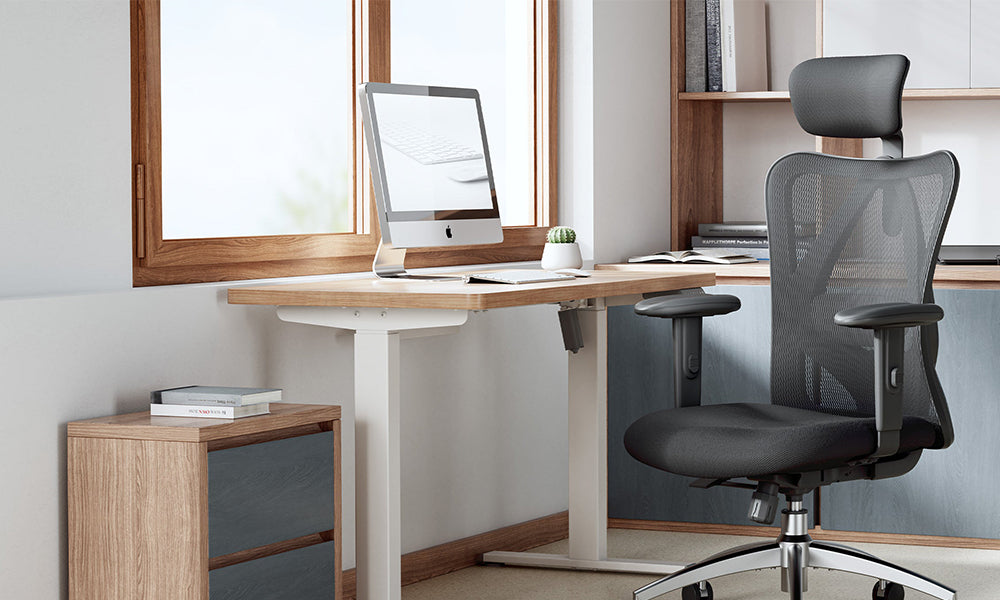Standing desks have become increasingly popular in recent years, touted as a solution to the sedentary lifestyle many office workers face. Advocates claim that standing desks can improve posture, increase energy levels, and even boost productivity. However, detractors argue that standing desks may not live up to the hype and could even lead to health issues of their own. In this comprehensive examination, we'll delve into the research to determine whether standing desks are truly worth it.
Understanding the Sedentary Lifestyle
Before diving into the pros and cons of standing desks, it's essential to understand the context of their rise in popularity. With the advent of technology and the shift towards desk jobs, many individuals spend the majority of their day sitting. Prolonged sitting has been linked to a host of health problems, including obesity, heart disease, and musculoskeletal issues. In response, the concept of the standing desk emerged as a potential solution to combat the negative effects of sedentary behavior.
The Benefits of Standing Desks
Improved Posture: One of the primary benefits touted by proponents of standing desks is improved posture. Sitting for extended periods can lead to slouching and poor alignment, which may contribute to back and neck pain. Standing desks encourage users to maintain a more upright position, potentially reducing strain on the spine and supporting better posture habits over time.
Increased Energy and Alertness: Advocates of standing desks often report feeling more energized and alert when standing compared to sitting. The act of standing can promote better circulation and prevent the mid-afternoon slump that many individuals experience after prolonged sitting. This increase in energy levels may lead to improved focus and productivity throughout the workday.
Potential Caloric Expenditure: While standing burns more calories than sitting, the difference may not be substantial. However, over time, the cumulative effect of standing for a portion of the day could contribute to weight management efforts. Additionally, some individuals may opt to incorporate light movements or stretches while standing, further increasing caloric expenditure.
Customizable Workstation: Many standing desks offer adjustable height settings, allowing users to transition between sitting and standing positions throughout the day. This adaptability enables individuals to find a balance that works best for their comfort and productivity. Furthermore, standing desks can accommodate various ergonomic accessories, such as monitor arms and keyboard trays, to optimize the workstation setup.
The Drawbacks of Standing Desks
Musculoskeletal Discomfort: While standing desks aim to alleviate the strain associated with prolonged sitting, they can introduce new sources of musculoskeletal discomfort. Standing for extended periods may lead to foot, leg, or lower back pain, especially if proper ergonomics are not maintained. Additionally, individuals with pre-existing conditions such as varicose veins or joint issues may find standing desks exacerbate their symptoms.
Fatigue and Discomfort: Standing for too long without adequate support or breaks can result in fatigue and discomfort. Unlike sitting, which provides a supportive surface for the body to rest upon, standing places continuous pressure on the feet and legs. Without proper footwear and anti-fatigue mats, individuals may experience discomfort that hinders their ability to focus and perform tasks effectively.
Potential Health Risks: While standing desks offer benefits such as increased calorie expenditure, they may also pose certain health risks if used improperly. Prolonged standing has been associated with an increased risk of varicose veins, cardiovascular issues, and musculoskeletal disorders. It's essential for users to alternate between sitting and standing, take regular breaks, and practice proper ergonomics to mitigate these risks.
Learning Curve and Adaptation Period: Transitioning to a standing desk requires an adjustment period as the body acclimates to the new position. Some individuals may experience discomfort or fatigue initially, which could impact their productivity and overall satisfaction with the standing desk setup. Additionally, finding the optimal balance between sitting and standing may take time and experimentation.
Best Practices for Using Standing Desks
Gradual Transition: When introducing a standing desk into your workspace, it's crucial to ease into standing gradually. Start by alternating between sitting and standing for short intervals, gradually increasing the duration of standing sessions as your body adjusts.
Proper Ergonomics: Invest in ergonomic accessories such as an adjustable monitor arm, keyboard tray, and supportive footwear to ensure proper alignment and comfort while standing. Adjust the height of your desk and monitor to maintain neutral positioning of your wrists, elbows, and spine.
Take Regular Breaks: Incorporate regular breaks into your workday to avoid prolonged standing or sitting. Set reminders to stretch, walk around, or perform light exercises to promote circulation and reduce fatigue.
Listen to Your Body: Pay attention to how your body responds to standing and adjust your workstation setup accordingly. If you experience discomfort or fatigue, experiment with different standing positions, footwear, or supportive accessories to alleviate strain.
Mix It Up: Variety is key to maintaining a healthy balance between sitting and standing. Alternate between sitting, standing, and walking throughout the day to prevent overuse injuries and promote overall well-being.
Conclusion
Are standing desks worth it? The answer depends on various factors, including individual preferences, work habits, and health considerations. While standing desks offer potential benefits such as improved posture, increased energy levels, and customizable workstations, they also come with drawbacks such as musculoskeletal discomfort and a learning curve. By adopting best practices, including gradual transition, proper ergonomics, and regular breaks, individuals can maximize the benefits of standing desks while mitigating potential risks. Ultimately, finding the right balance between sitting and standing is key to reaping the rewards of a healthier and more productive work environment.



